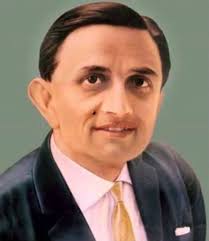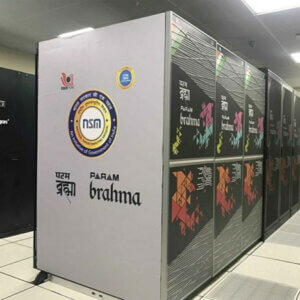Dr. Vikram Sarabhai, as the father of India’s space program, is known for his visionary role as a pioneering Indian scientist, with an unrelenting drive for ground-breaking science and an enthusiasm to enable India to play an influential role in space research: one of the world’s leading space research organizations today – ISRO. His life and contributions reflect here as his indelible marks on Indian science and technology.
Early Life and Education
Vikram Sarabhai was born on 12 August 1919 in an elite family at Ahmedabad, Gujarat. He had a progressive surrounding that eventually shaped his inquisitive and thoughtful personality. His family was actively involved in the Indian freedom movement, and his house was like a social and cultural center. This environment fostered his early curiosity in science and love for national development.
Earlier Sarabhai attended Gujarat College before going to the University of Cambridge, where he followed natural sciences. Then, when the World War II took place, he was requested to return to India. While there, he sought after visiting Sir C.V. Raman, the Nobel laureate on science. After World War II, he went back to Cambridge and obtained PhD based on a thesis written under the title “Cosmic Ray Investigations in Tropical Latitudes,” which eventually proved useful for his upcoming career in space science.
Vision for A Scientific India
He was a scientist but also a visionary who realized the power of science to change a nation. He believed that modern science and technology would address India’s socio-economic issues and strove for institutions that would take India into a new era of scientific development. He promoted science and technology as a self-reliance tool wherein technology could solve problems related to poverty, education, and health.
Foundation of ISRO and Indian Space Programme
The greatest achievement of Dr. Sarabhai was the establishing of India’s space programme. As the decade dawned in the 1960s, space research had just begun to gain momentum all over the world. A developing country like India did not need a space program. It was Sarabhai who visualized space technology as a stimulant to national development. He once said:
“There are some who question the relevance of space activities in a developing nation. To us, there is no ambiguity of purpose… We do not have the fantasy of competing with the economically advanced nations in the exploration of the Moon or the planets or manned space-flight.”. But we are convinced that if we are to play a meaningful role nationally, and in the community of nations, we must be second to none in the application of advanced technologies to the real problems of man and society.
In 1962, Sarabhai founded the Indian National Committee for Space Research, which eventually developed into ISRO in 1969. He developed indigenous space capabilities and had envisioned launching the first rocket from Thumba in 1963. Under his watch, India took on some important projects like the development of the Aryabhata satellite, which was launched much later in 1975, years after his demise.
Institutional Legacy: Establishing Research Centers
Other than ISRO, the contribution of Dr. Sarabhai was instrumental in establishing other critical scientific institutes in India. In 1947, he established the Physical Research Laboratory (PRL) at Ahmedabad, which turned out to be a cradle for space sciences in India. He established the Indian Institute of Management (IIM) at Ahmedabad in 1961. He also founded the Community Science Centre in Ahmedabad towards the promotion of scientific curiosity amongst young students. As an outcome of his efforts at further creation of talent for science, numerous institutions now are the pillars of Indian science and technology.
Joint Venture with International Science Thinkers
Dr. Sarabhai understood the need for cooperation and idea-sharing at an international level. He promoted relationships with many countries, such as the United States and the Soviet Union, to strengthen India’s space research. He also collaborated with another visionary Indian science leader and founder of India’s nuclear program, Dr. Homi Bhabha. After Bhabha’s sudden death in 1966, Sarabhai took over as chairman of the Atomic Energy Commission of India and furthered India’s nuclear and space ambitions.
Personal Life and Legacy
Vikram Sarabhai married Mrinalini Sarabhai, a celebrated classical dancer and choreographer, in 1942. The couple shared love for the arts and co-sponsored many cultural and educational programs. Mallika Sarabhai and Kartikeya Sarabhai, both children of the couple, work towards upholding their legacy in art and environmental sustainability respectively.
Dr. Sarabhai passed away at a too-young 52, on December 30, 1971, which is a very huge loss to India, but, I would say his vision has lasted the test of times, and today, ISRO has gained the acclamation across the world through a lot of such ventures- be it Chandrayaan, Mangalyaan, and all its cost-effective exploration ideas of space with Sarabhai’s accessibility impact and proximity.
Conclusion
Dr. Vikram Sarabhai represents a life of commitment to society’s progress through great dedication and foresight, changing the scientific landscape of India and inspiring successive generations of scientists and engineers. Through his institutions and many others mentored by him, this has made him a continuous source of inspiration in the scientific journey of India while pushing the frontiers of exploration and discovery. It was the life of Sarabhai, the epitome of vision and dedication that reminded one of what was possible when science was used for the greater good. And as we look to the stars today, it is in that first dreamer for India that we find it all.




